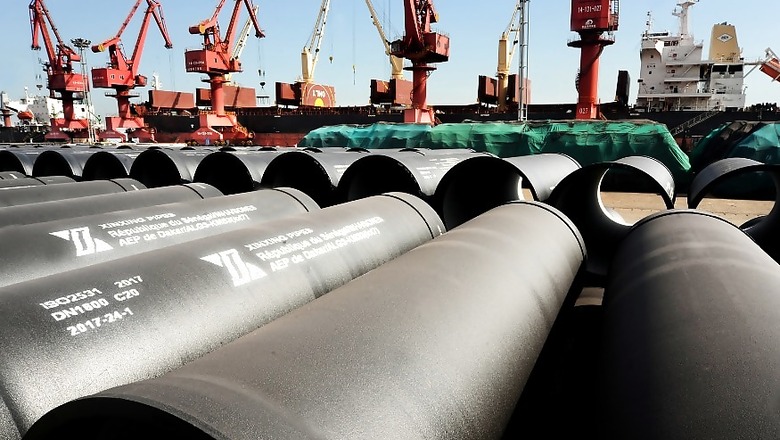
views
Beijing: China on Wednesday said its economy grew 6.4 per cent in the first quarter of 2019, slightly more than expected despite the world's second largest economy facing a host of headwinds, including a long-running trade war with the US.
China's GDP reached 21.343 trillion yuan (about USD 3.18 trillion) in the first three months of 2019, and the growth pace was the same with that of fourth quarter 2018, the National Bureau of Statistics (NBS) said in a statement on Wednesday.
The Chinese economy grew 6.4 per cent in the year's first quarter compared with the same period in 2018.
The first quarter GDP growth was in the range of 6 per cent to 6.5 per cent target fixed by the Chinese government for this year. Last year the economy grew at 6.6 per cent.
The tertiary sector reported the strongest growth in added value by expanding 7 per cent to reach 12.232 trillion yuan, which accounted for 57.3 per cent of the total first quarter GDP, picking up by 0.6 percentage points compared with first quarter 2018.
Consumption continued to be the mainstay in driving up demand, contributing 65.1 per cent to first quarter economic growth, NBS data showed.
The industrial and agricultural sectors saw their added value grow 6.1 per cent and 2.7 per cent respectively, the figures said.
China's industrial output, an important economic indicator, expanded 6.5 per cent year on year in the first quarter. The growth rate came in 1.2 percentage points higher than that recorded in the January-February period, the NBS said.
In March alone, industrial output increased 8.5 per cent year on year, a record-high since July 2014, up 3.2 percentage points from the January-February period.
The industrial production saw faster growth in the first quarter, with more presence of high-tech industries, the NBS said in a statement.
Industrial output, officially called industrial value added, is used to measure the activity of designated large enterprises with annual turnover of at least 20 million yuan (about USD 2.9 million)
The Chinese economy, the world's second largest, has been slowing down facing a host of headwinds which included a long-running trade war with the US, weak consumption at home and slower export demand abroad, as well as debt problems in both the public and private sectors.
Expectations were high about reaching durable deal with the US to end the trade war as both the governments gave a positive assessment of nine rounds of talks reaching agreement on a host of issues.
US President Donald Trump who kicked off the trade war last year is demanding China to reduce the USD 375 billion trade deficit and protection of intellectual property rights (IPR), technology transfer and more access to American goods to Chinese markets.
He has already increased the tariffs on over USD 250 billion Chinese exports to US and threatened to extend tariffs on USD 200 billion Chinese imports to 25 per cent. China too slapped reciprocal tariffs on some US exports to the country.
Trump held back his threat to impose additional tariffs on the rest of Chinese imports as both sides stepped up talks to finalise the text of the deal.




















Comments
0 comment